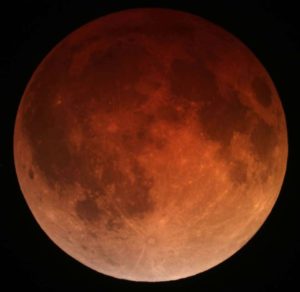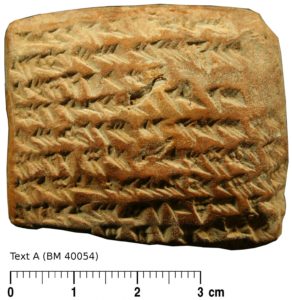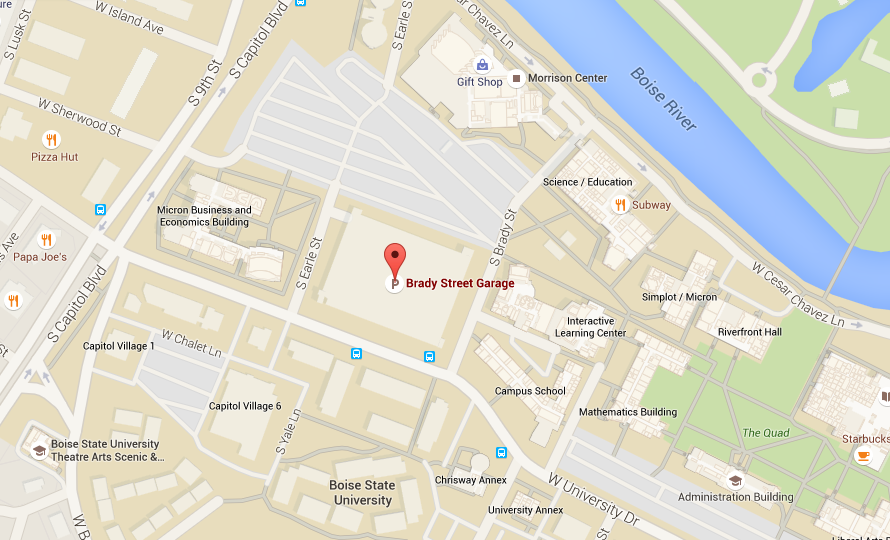From our friends at The Idaho Statesman:
lunar eclipse
All posts tagged lunar eclipse

On May 26, most of the Americas and eastern Asia will be treated to a total lunar eclipse. While lunar eclipses are perhaps less spectacular than solar eclipses, they are more common and much easier to view.
I thought it might be helpful to provide a short primer on lunar eclipses in general and how, when, and where to view this one in particular for the Boise metro area. Most of what I say here will be relevant for other regions as well.
Continue Reading
Total lunar eclipse on 2015 Sep 27. From wikipedia.
As a follow-on to our spectacular total solar eclipse last August, North America will be treated to a total lunar eclipse early on Wednesday (Jan 31) morning. The eclipse will start about 5:51am MST and will end just after 7a. No special equipment needed to observe the eclipse. If you can see the Moon, you’ll be able to see the eclipse.
A lunar eclipse occurs when the Moon passes through the Earth’s shadow (as opposed to a solar eclipse, when the Earth passes through the Moon’s shadow). Because red light from the Sun is refracted around the Earth by the atmosphere, during eclipse the Moon can appear murky red (similar to why sunsets appear red).
In fact, Wednesday’s eclipse is triply special — not only will the Moon pass through Earth’s shadow. It will also pass near perigee (the closest point in its orbit to the Earth), making the Moon appear especially large and bright in the sky (about 14% larger and 30% brighter). It will also be the second full moon in the month of January, making it an unofficial blue moon.
These three celestial events aren’t all that rare individually — lunar eclipses happen roughly every six months, supermoons happen every few months, and blue moons happen every two to three years. The confluence of all three is also not all that rare — the last time was in Dec 1982. So while Wednesday’s sky show may be impressive, it will not be the harbinger of doom claimed by some false prophets.
For Boise, though, another more mundane event may spell doom — we’re slated for clouds that morning, and no sky = no eclipse.
Today, in the first summer meeting of our research group, we discussed a recent paper from Prof. Guillermo Gonzalez of Ball State that explored observations from Babylonian clay tablets to estimate changes to the spin rate of the Earth.
Even though it seems like there’s never enough time in the day, it turns out that the Earth’s rotation rate has been slowing over thousands (and even billions) of years. Numerous effects, including tidal interactions with the Moon, reshaping of Earth via earthquakes, and the melting of glaciers, all contribute to slow down or speed up Earth’s rotation.
One good way to measure the change in the length of the day is to measure the positions of stars, planets, and the Moon in the sky and compare their positions with where you’d expect them to be based on the time. And going back to about 1600, astronomers have used telescopes to accurately measure the timing of celestial configurations to good enough precision that changes in the length of the day can be seen – for instance, the day was about 22 minutes longer when Galileo first pointed his telescope to the heavens.
But the change in length of the day is pretty small – the Moon’s tides slow the Earth about 2.3 milliseconds per day each century – and the change isn’t necessarily constant over time. Fortunately, even thousands of years of ago, humans were keeping track of the positions of objects in the sky, even though they didn’t know what the objects were.
In Gonzalez’s recent paper, he analyzes reports from ancient Babylonian astronomers of lunar occultations and appulses (i.e., close approaches). These reports extend back to 400 BC, giving an observational baseline of nearly 2500 years, and are replete with lovely and ancient descriptions:
“Year 7. Month IV, the 22nd, 64 degrees before sunrise, Saturn came out from the northern horn of the Moon.”
Gonzalez’s results mostly agree with previous work, although he finds that the Earth’s rotation has slowed a bit more slowly than other estimates suggest since the time of Babylon.
 Join the Boise State Physics and Astronomy Club on the top of the Brady State Garage on Boise State’s Campus to view the last total lunar eclipse until 2018.
Join the Boise State Physics and Astronomy Club on the top of the Brady State Garage on Boise State’s Campus to view the last total lunar eclipse until 2018.
The eclipse occurs on Sunday, Sep 27, and the viewing event runs from 7pm till midnight. The Boise State Physics Dept. will provide telescopes, and visitors are encouraged to bring chairs. Contact Prof. Brian Jackson with questions.
And thanks to Pam Robbins, Susan Steffes-Ferri, Memo Cordova, & Mike Kennedy for supporting our PonyUp Campaign to bring back the Boise State Observatory.

